Your Halloween 2025 Anime Watchlist
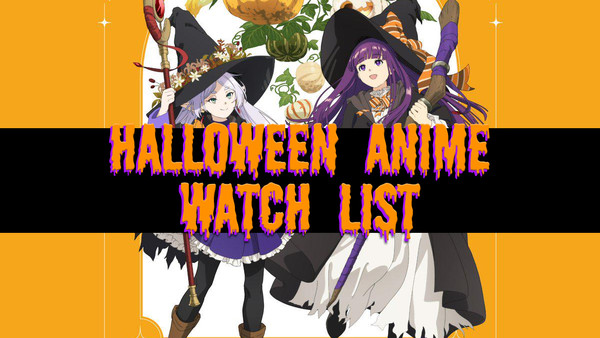
Horror is a broad genre with many facets. For some, it's simply ghosts and monsters—the eldritch and the unknowable. For others, it's more psychological—the twisted aspects of the human soul and the terror born therein. And for still others, it's just pure, graphic violence—splatterhouse gore that hits us on a visceral level. This Halloween season marks the perfect occasion to sit down and watch some of the best horror anime out there—and the ANN staff is here with our recommendations!
Death Parade
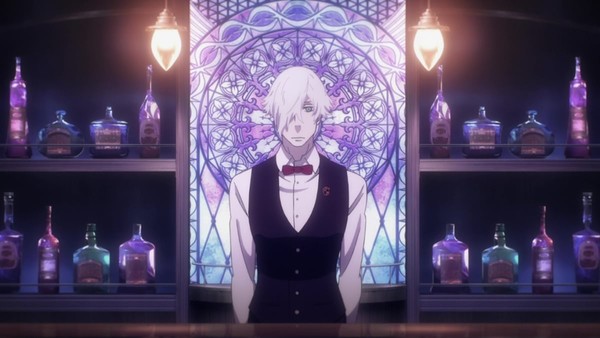
“Do you know what the most primitive emotion people have is? It's fear.” This memorable line of dialogue, delivered with unnecessary glee, is what lies at the gruesome, anatomically correct heart of Death Parade, a standout psychological thriller. Combining classic horror tropes with supernatural intrigue and a fleshed-out science fiction concept of the afterlife, Death Parade deserves a spot on your spooky season watchlist even 10 years after its release.
When guests arrive at Quindecim—the luxurious, art-nouveau style bar that serves as the backdrop to much of Death Parade—they don't remember a thing. But the viewer is quickly let in on a tragic secret: it's because they are no longer among the living. The shock of transitioning from a state of life to death is such that they not only don't recall important events from their own lives, they don't even yet realize that they're dead. It's up to arbiters, like bartender Decim, to convince guests to play bar games with their lives at stake: extreme situations to bring forth extreme reactions in their guests, or as Decim calls it, “the darkness of their souls.” Only then can Decim complete his actual job: determining whether each guest is rewarded with reincarnation—or damned to eternity in the void. Death Parade is not scary so much as it is disquieting, discomforting, and unsettling. The elegance of Decim's bar clashes incongruously with the ghastly nature of its parlor games. Dartboards that depict vital organs. Bowling balls that contain beating human hearts. An air-hockey table bedecked with grinning skulls. Confronted with these deadly penalty games, characters quickly reveal their true colors. The character design is a big factor here: expressive faces with broad mouths are quick to grin or grimace; revealing eyes can twinkle with mischief or dilate in horror. Death Parade's kaleidoscopic portrayal of human emotion suggests the fragility of our composure and sanity. Perhaps we are all only one death game away from revealing our dark sides.
Death Parade originated in an award-winning student project, Death Billiards, before getting its own season in 2015. Even a decade later, it's a must-watch. It's got an unskippable opening sequence that portrays an exuberant joie de vivre only an anime about death could depict. But more than anything, Death Parade is one of a kind. Its story sits at the intersection of horror and science fiction/fantasy, which makes it a challenge to categorize, but also makes it uniquely memorable. The intricate rules that govern the afterlife could classify it as dark fantasy, while the ineludible tragedies of the guests' severed lifespans fall under a more classic definition of horror. What's more: Death Parade can also be rather funny! The humor fits more seamlessly than you would expect: as long as people have existed, we've been making jokes about death to ease the discomfort of its inevitability. Between the death games, the worldbuilding (or should I say galaxybuilding?), and the surprisingly developed character arcs considering the cut-short time we have with most of them, there are a lot of moving parts in this single 12-episode season—but it never feels overdone. It's a fascinating and frightening gaze into the labyrinthine twists and turns of the human psyche, offering an unflinching glimpse into humanity at its most redeemable—and its least.
—Lauren Orsini
Another

There's some room for debate as to whether Another is good horror or not. It definitely trades in some campy angles: the use of ball-jointed dolls, some of the manners of death for the cast, and maybe even the entire conceit of a curse laid on a specific class caused by well-meaning students who couldn't cope with the death of their classmate are all at least a little cheesy. But there's still something special about this show to me, and I'd argue that the campier elements are still used well, bringing the story together in a way that makes it work. It's greater than the sum of its parts.
That's not surprising given that the source novels come from the pen of Yukito Ayatsuji. His mystery bona fides are impressive, most notably his novel The Decagon House Murders. Written in the style of Agatha Christie and paying homage to her 1939 novel And Then There Were None, the book is a triumph in its genre. Although Another doesn't quite hit those same heights, we can still see Christie's influence on the story – most importantly, in how you can solve the entire mystery if you're paying attention to the first five minutes. (This is also true of And Then There Were None.) In fact, I'd say that Another is a horror version of Christie's classic: the desperate search for a culprit hiding in plain sight, the use of dolls mirroring the soldier figurines in Christie's book, and the perversion of a vestige of childhood (the class' attempt to cope with the death of a classmate) all tie back to classic Golden Age of Mystery elements. The difference is that this time, the gore is right there for us to see. But really, is an umbrella through the throat that different from apparent death by wallpaper? (“The Blue Geranium” in Thirteen Problems) It's only goofy if you don't know where it's coming from.
The beauty of Another is in its unfolding. It's not so much what happens, but when and how it does, in the false senses of security that befall the characters at various times, the frustration that everything is right there if only they could turn their heads just the right way and see it for what it is. The idea that something good, an attempt to memorialize a dead friend, could turn so bad may be a classic of several genres, but it works here because of the Golden Age tricks the writing uses. It may not have the visceral qualities of Higurashi: When They Cry or the haunting rewritten fairy tale of Magnetic Rose, but it's still one of my favorites in its genre.
—Rebecca Silverman
Magnetic Rose
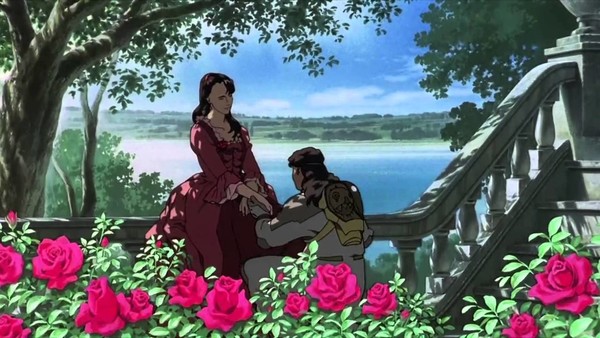
What if I told you there was a beautifully animated ghost story set in space that was directed by Kōji Morimoto, had music composed by the iconic Yōko Kanno, AND a screenplay written by the late Satoshi Kon—all based on a manga by Katsuhiro Ōtomo. Sounds almost too good to be true, doesn't it?
Well, it's real, and it's a gem of a horror anime in the 1995 sci-fi anthology film, Memories. Magnetic Rose is the first in a film of three anime shorts based on the work of the Akira creator, and is without a doubt one of my all-time favorite “haunted house” stories. The story revolves around two salvage workers traveling through space who encounter a distress signal that leads them to what appears to be a spaceship graveyard. They decide to take a look inside the giant space station at it's center, and discover what appears to be the remnants of the home of a famous opera singer named Eva. The singer had become a recluse later in life, and built herself an extravagantly luxurious home in the space station—complete with chandeliers, oil paintings, and the alarmingly still-active cherub statues that act as disturbing little robot butlers.
As the two search deeper inside Eva's seemingly empty and slowly decaying home for the source of the distress signal, the salvage workers start seeing visions. First what they laugh away as old recorded holograms of Eva's past glory soon start turning into increasingly disturbing and very personal echoes of their own memories--especially for the man named Heintz—horrifically replaying the most heartbreaking things that lie deep within his recollections. Now, with the two men trapped inside this crumbling place, haunted by the digital ghost of a woman's desperate need for love and fame, it becomes a race against time for Heintz to make his way back out before the horrors that Eva shows them swallows both men's psyches whole.
For a short that's only 45 minutes long, it packs in more environmental and emotional story-telling than most haunted house horror films that are twice as long. Satoshi Kon's talent for thoughtfully writing engaging characters is on full display. And it's all highlighted by the lavishly beautiful animation and haunting soundtrack by Yōko Kanno, which mixes her signature jazz sound with larger-than-life opera music, often echoing the oppressive darkness of space that surrounds this story and it's characters. If you're looking for a hidden gem of psychological horror for your Halloween viewing this year, Magnetic Rose is one of the crown jewels of the genre, anime or otherwise. And you're in luck—not only did Discotek Media release the anthology film Memories on bluray not too long ago, but they also crafted a brand-new English dub for the release, so that fans old and new can appreciate this short in whichever language they prefer, in all it's high-definition glory. (And bonus: you still have two more shorts to watch later!)
—Dawn H.
Boogiepop Phantom

I'd consider myself a cosmopolitan horror fan. The space for variety and creativity in the genre opens it up to a wide swathe of permutations, and I think most of them have their merits. However, if I had to choose a favorite mode of cinematic terror, I'd go with examples that are slow and psychological. And few anime wear those adjectives more proudly than Boogiepop Phantom does.
Boogiepop Phantom's greatest asset—and the reason it has stayed with me for close to two decades—is its exacting command of atmosphere. With the possible exception of its close contemporary Serial Experiments Lain, no other anime evokes the same feeling of quiet dread deep in my chest. Its muted palette, persistent vignette effect, and urban setting combine into a singularly claustrophobic experience. That's appropriate, too, given its predilection for the dark corners of its characters' interiorities. It's a look that feels both sterile and unnervingly intimate, and in that sense, Boogiepop Phantom is probably the closest any anime has gotten to capturing Kiyoshi Kurosawa's style around the time of his horror classics Cure and Pulse.
Rewatching Boogiepop Phantom also made me realize how little I remembered about its plot. That's not a critique; rather, it's an acknowledgement of its deliberately abstruse presentation. This is a sequel to a light novel I haven't read, presented in a nonlinear fashion through a labyrinthine network of people and relationships. As if to emphasize that sense of mystery, the titular character exists as merely a whisper of a rumor for most of the premiere. The narrative only focuses on connecting its threads in the latter half of the season, so I don't blame myself for not picking up on everything my first time through. Moreover, I'd argue that a sense of being lost behooves the anime. By keeping the audience in the dark about its grander machinations, the show forces us to focus on the smaller and more important details first.
Boogiepop Phantom's true terror stems from its themes and how fresh they still feel. Many of these stories root themselves in a profound cynicism about the state of modern society. People feel isolated and drown themselves in nostalgia, or they go out of their way to seek other forms of escapism, frequently through violent means. Although we may be a quarter of a century removed from its original airing, these anxieties ripple into the present day. “My Fair Lady,” the episode I remembered most clearly, still surprised me with its tale of technology-addled delusion, addiction, misogyny, and self-destruction. While originally written about dating sims, today it reflects the horror stories I've read about ChatGPT with frightening accuracy. Perhaps, if anything, Boogiepop Phantom wasn't cynical enough.
I love that bleakness, though. It makes the series scarier, which is more relevant to the subject of this article, but I also believe the show's tone stems from an earnest engagement with the observed effects of technological development, economic hardship, and turn-of-the-century societal panic. In the spirit of that earnestness, Boogiepop Phantom also doesn't attempt to provide any simple answers. It only tells us that we can't let the past, present, or future single-handedly dominate our spirits. Moving forward—as individuals and as humanity—requires us to break the confines of our tunnel vision. We mustn't look at the world through the same myopic lens that these characters do. Otherwise, we are all haunted.
—Steve Jones
Mayonaka Punch
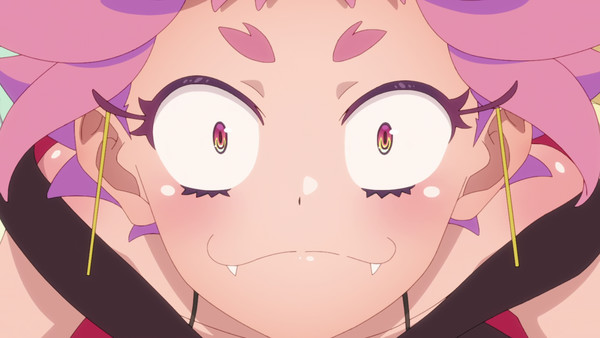
So you've gotten this far in the list, and I already know what you're thinking: “What's a fairly recent, lighthearted comedy like Mayonaka Punch doing up against body horror, murder mystery, and the literal Apocalypse? Okay, yeah, I get that there are vampires, and that's spooky enough, I guess, but still, there's nothing scary about Mayonaka Punch!” But oh dear viewer, you'd be very, very wrong indeed. Anybody who has ever tried their hand at making Internet content knows there are MANY things scary about this show: Coming up with clickbait titles for SEO! Trying so desperately to monetize your channel! Having to deal with toxic comments and dislikes! Creating mukbangs worthy of food crimes! And most terrifying of all: having to deal with the YouTube algorithm! If that doesn't scare the pants off ya, then I don't know what will.
The crazy thing? Somehow, all of this seems very, very fun in the world of Mayonaka Punch. Whoever made this understood all of the tiny Kafkaesque horrors that can go into digital creation, and what better way to make fun of them than spin 'em all into a slice of life comedy? Unlike your favorite YouTuber, nobody in Mayonaka Punch sits dead-eyed in front of their computer doomscrolling through their feeds in search of inspiration. All of their stupid attempts at viral fame are done with a manic glee that is contagious--you can't help but cheer Live and her gang of vampiric goons on as they try to eat mountains of garlic, or do Jackass! stunts off bridges.
The humor and premise aren't the only things that make Mayonaka Punch great. I absolutely love the anime's OP. It's a bop and a half that's lived in my head rent-free since its inception. It might even belong in my top five favorite OPs at this point. The color scheme is a ghoulishly garish blend of dark reds, purples, blues, and blacks, and alongside the elegant gothic manor the Mayonaka Punch gang reside in, exuberantly captures the visuals of horror without actually being horrifying. There's even a tender episode about following your musical passions that hit harder upon rewatching it, especially now that I've picked up the guitar again to practice everything I should have learned five years ago (hello, sweep picking!).
Mayonaka Punch's exchange of scares in favor of laughs perfectly encapsulates that quirky, campier side of Halloween. Watching its cour-long run was love at first sight for me, and I seriously cannot wait for the day season two comes out.
—Jeremy Tauber
Akira
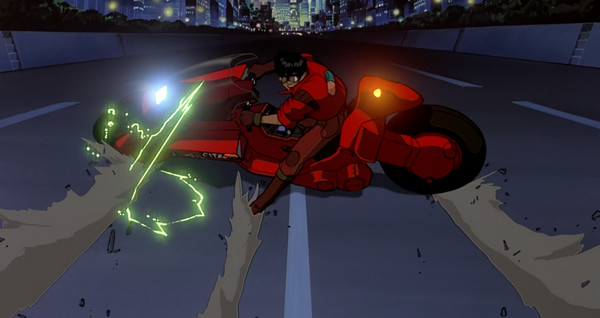
Simply put, Akira is the stuff of legends. This absolutely iconic smash hit, which is right there amongst the likes of Star Blazers and Robotech as arguably the most common titles you'll usually hear older anime fans say got them into anime in the first place (notably, this includes Greg Ayres), is a classic for a reason. Several reasons, actually. Truly, the influence of this movie—both in and outside of anime—can't be overstated. You can spill a ton of vibrantly colored ink talking about the massive cultural and artistic impacts of this film, but today we're not here for a history lesson. Instead, let's talk about what makes this cyberpunk staple a good choice for something to get you in the spooky mood.
I know what some of you are thinking: Yes, we could sit here all day and argue back and forth about whether or not Akira counts as a horror movie, and by extension of that, whether or not it's worthy of your grand Halloween movie marathon. But you know what we couldn't debate about? How do they not make gore and body horror like they did back in the 80s? Hyper-violence was in, and nothing sells that the same way gallons of thick, brightly colored, painstakingly hand-rendered blood and guts do. And Akira takes that all the way up to an 11 in its last stretch. Its most graphic moment (at the risk of spoiling anything, I'll just call it “that thing that happens which starts with Tetsuo's arm”) is more than icky enough to leave your skin churning and your stomach crawling. So basically, even if it's not a horror movie, it's still—to some extent—a scary movie. So for that reason, for the sake of this list, it counts.
It's no wonder that body horror suits Akira like a glove made of flesh with a bunch of creepy crawlies scurrying around just underneath its top-most surface. More than most other subgenres of horror, body horror often lives or dies by how good its visuals are. And Akira is nothing if not one of the all-time greats when it comes to animation of any kind. Every single one of its upwards of 160,000 cels is an artistic work unto itself. Regardless of how you feel about the rest of the movie, there's no denying the visual and stylistic genius that's constantly on (literal) display throughout Akira. And as it turns out, the same hands capable of producing many of anime's best and most breathtaking cityscapes to this day are equally capable of creating some of the most grotesque body horror the human eye has ever been subjected to. Simply put, Akira is the gold standard when it comes to body horror in anime.
The bad news is that yes, you do have to wait until the last moments of this 2-hour film for all the body horror in all its nausea-inducing glory. The good news is that Akira is a brilliant movie overall, so it'll be time well spent in one of anime's most gorgeously animated and often referenced worlds. Akira is usually talked about as a must-watch for (strong stomach'd) lovers of cyberpunk, 80s fare, anime, or animation overall—and to be clear, it is. But if the theme of your Halloween spooky-movie-thon is body horror, then the equal parts remarkable and revolting Akira should absolutely be on your radar.
—Kennedy
Higurashi: When They Cry Season 1

There's something about the medium that makes it difficult to make a truly scary anime horror. It's easy enough to create gory scenes and animate brutal fights against slavering monsters, but unlike live-action horror, there's an innate disconnect between painted pictures and real life. So while there are plenty of horror-themed anime out there, few I've seen could I class as truly disturbing. Except for Higurashi: When They Cry.
Based on a series of “sound novels” (sound-predominant visual novels without branching story paths) by Silent Hill F writer Ryukishi07, over several TV seasons and OVAs, Higurashi: When They Cry comprises one hundred episodes in total. While later seasons have their detractors, its first twenty-six-episode season (2006) is almost universally lauded by critics as a landmark in anime horror.
Higurashi: When They Cry is set in the fictional Japanese mountain village of Hinamizawa, and follows the misfortunes of a group of school-age friends, as they are tortured and killed multiple times over an endlessly repeating time loop. The show is almost unrelentingly intense, bleak, and infused with a pervasive air of choking paranoia. Almost anyone could – and does – become a killer. Perhaps one of its scariest aspects is its deeply unsettling character designs. Whether deliberate on the part of Studio DEEN or not, the little kids' misshapen facial features, with implausibly enormous eyes and oddly-placed mouths and noses, only add to the atmosphere of wrongness, especially during the scenes of often sickening violence.
The scene that's lived rent-free in my head (and in my nightmares) is from episode 17, and it's known in hushed tones online as “the fingernail scene”. Anyone who's ever accidentally torn a fingernail or had something jammed underneath one can shudder with recognition that fingernail abuse is a particularly unpleasant form of torture. In this scene, green-haired teenager Mion, at her powerful family's behest, forces her identical twin sister Shion to place her hand in a brutal-looking contraption, and to traumatically avulse her own fingernails in penance for falling in love with the wrong boy.
Shion's initial weak bravado shatters into wails and begging as she experiences unbelievable levels of pain and humiliation. The scene is almost completely bereft of blood and gore, apart from nails ripped from their beds. There are no monsters, no supernatural terrors, no serial killers. Only familial obligation and coercion. Closing your eyes doesn't lessen the scene's power either, as no matter whether watched in dub or sub form, the sound effects and Shion's anguished screams are little short of excruciating to experience. What's even worse is that Shion's suffering achieves essentially nothing. While she is “forgiven” by her family, the same can't be said for the object of her affection. It's a devastating, painful scene in a show filled to the brim with them.
—Kevin Cormack
Psycho-Pass Season 1
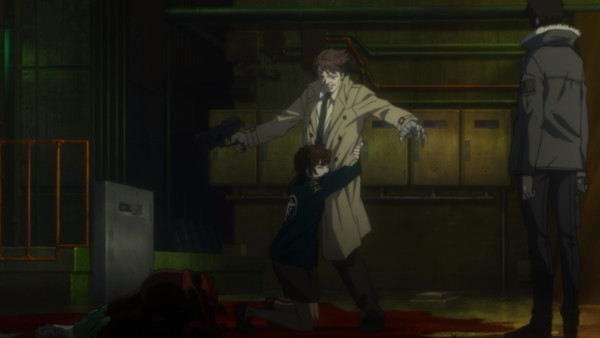
There are all kinds of scary. Jump scares that make you shriek, those creepy, shivers up your back psychological horror, violent grotesqueries, fantasy monsters, and real-life monsters. Then there is the scary where you find yourself up at 3 AM, staring at the ceiling, wide-awake, churning over a persistent horror for the third night in a row. That's the scary you get with Season 1of Psycho-Pass, by Aya Fukuda, Gen Urubochi, and Makoto Fukami.
This season combined several common horror elements – we have our bog-standard out-of-control AI as a base, a little light serial killer with a system hack for a recognizable flavor, and a police state in which personal freedom is limited as a topping. But what kept me up at night was the far more real and insidious horrors. It was, specifically, a scene that highlighted the Bystander Effect, with a sci-fi twist, but it wasn't the dystopia that terrified.
The scene lives vividly in my memory. A woman is assaulted in public, surrounded by people who cannot make their minds register the violence they are witnessing. It was a well-animated scene of a woman lying on the pavement in a crowded shopping area being beaten to death while no one did anything. Being a woman preyed on by someone while no one seems to notice. There is an old chestnut about heterosexual dating that men fear being laughed at, and women fear being killed. Many women have experienced harassment and even assault in places where help should have been available. So there is a physical and emotional tension reaction to this scene that you may not watch, and it is indeed absolutely critical to the story, all while no one does anything at all.
I could not come up with any scenario more horrific if I tried. Fantasy monsters, sounds in the dark, they speak to something primal in us. Psychological horror plays with the dissonance between our lizard brain and the modern adult logic we insist is ours. We know this thing cannot violate the rules of physics and nature; nonetheless, we are frightened that it might, or that it is.
But Psycho-Pass engages the limbic system in many ways. By preparing us to want order and peace, by putting us on the side of the police who understand that some people's freedom must be sacrificed to create safety for the masses, when the system goes horribly wrong, we can only watch helplessly, like one lone bystander who sees the attack, but cannot cry out to get help.
For a scare that lingers for days and still leaves some marks even years later, I recommend Psycho-Pass Season 1. Why only Season 1? Because, with all the death and terror that still gives me nightmares, Makoto Fukami will never hurt his lesbians.
Made in Abyss
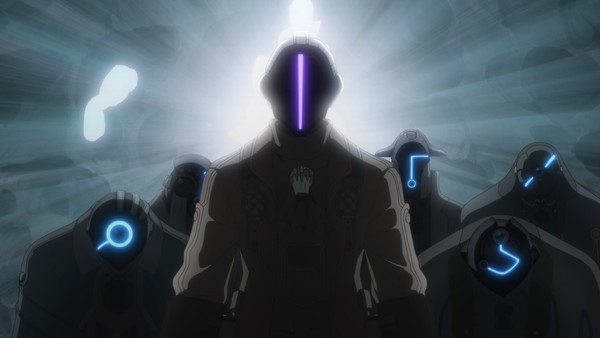
As humans, we hold a primal fear of the unknown. It's one of the most basic feelings that informs our actions, both in civilized society and our most raw, animalistic choices. Ironically, we are also spurred to pursue the unknown—to plunge into and explore it to satisfy our curiosity, even against the inner voice that screams at us that we do not need to know. It's how countless discoveries have been made and even more numerous lives have been lost. Perhaps the scariest thing about the unknown is the expansive unmeasurability of it: sometimes what's waiting for us in the darkness we plunge into isn't the relief of something surmountable by the human spirit or the personal growth gained from soldiering through. Sometimes what's down there is even worse than we could have possibly imagined.
Made in Abyss is an anime series about that primal desire to plumb down into the unknown. Riko is nominally looking for answers about the disappearance of her mother, while the robot Reg is trying to find out about his own origins. But this very human quest for knowledge is tempered by what they already know about the Abyss: the way it swallows and crushes and warps not just what sets foot inside it, but what dares to try to come back out afterwards. Riko and Reg, before they even start descending early on in the story, have tacitly accepted that they aren't climbing back out of that damned hole, and even if they do, they won't be the same. "It's not going to go back to the way it was before.”
Its harrowing depiction of descending into the unknown is what makes the horror of Made in Abyss so potent even alongside its other anime accoutrements like action setpieces, gorgeous world-building, and weird pervert stuff (and really, weird pervert stuff is its own standby element of horror media, so it's entirely appropriate). Even as the cute characters are gaping in wonder at what's around the next corner, the show never shies away from the fact that this hellscape in a hole can and will kill anybody in it without a second thought. It dials that feeling up to true terror levels in entries like the first season's tenth episode, which depicts the body-mutilating consequences of being too careless around the sorts of creatures that live in this sunken nightmare. It shows what happens to Riko and Reg's desperate reaction to it with casual cruelty in a way that makes your mouth dry up and your eyes lock to the screen. Despite the fantastical trappings, it's a very believable, relatable horror.
As naturally frightening as the flora and fauna of the Abyss are, the series makes doubly clear that the people, the sentient beings who somehow make their home in this thing, are to be feared even more. The towering Ozen is an oppressive, imposing force who menaces the kids into soul-hardening training, and she's ostensibly one of the nicer occupants. It's the cold, warped morals of Bondrewd that show the true nightmares people can inflict on their kin. What he does to Nanachi and Mitty in flashback sets the stage for the abuses to be seen. If you need a film specifically for your Halloween movie marathon, you can put on Made in Abyss: Dawn of the Deep Soul to experience the gnawing dread of feeling that something horrible is going to happen to someone at the hands of Bondrewd before the end. You and the characters will have to carry it long after.
There is that feeling of pushing on, of persevering through Made in Abyss and its horrors, but it's bittersweet in the face of everything else that's thrown at these cute kids. But that's precisely what makes the series so potent, and so perfect as an experience of fear as an emotion. Every little victory of a step taken while staying alive only brings Riko, Reg, and Nanachi into another layer more freaky, frightening, and unknowable than the last. The story taps into that primal human emotion that drives us to explore even the darkest of horrors, both within stories and without: where we grip our seat with sweat and apprehension, compelled to see what's coming next, yet afraid to, precisely because we don't know what it is.
—Christopher Farris
Digimon Ghost Game

When talking about good horror anime and what shows actually come close to being worthy of the label, I feel like kids' horror is often overlooked in the conversation. Sure, the restrictions in having to be kid-friendly mean you can't get anything as graphic as more adult-oriented horror, but restraint doesn't always have to be a bad thing, and sometimes you can make something scarier through implication rather than showing something explicit. Such is the case for Digimon Ghost Game, which, despite seldom showing a single drop of blood, manages to be frightening in ways that can induce nightmares in children and adults alike.
Compared to a lot of other Digimon entries, which tend to have a big overarching plot, Ghost Game is a very monster-of-the-week series with a simple formula. Our heroes, Hiro, Ruli, and Kyoshiro, will investigate some paranormal disturbance, and after finding out that said disturbance was caused by a Digimon, will usually battle them with their own Digimon partners until they learn that the Digimon in question was only acting maliciously due to a misunderstanding of how things work in the human world. Sometimes this misunderstanding will be a Digimon doctor mummifying patients after learning about mummies on TV, and other times the kids might have to deal with Digimon that are hungry predators or serial killers, with the misunderstanding being that these otherworldly creatures don't see anything wrong with attacking humans or other Digimon. Regardless of how threatening the Digimon of the week actually turns out to be, though, their actions before any resolution are pretty much always played for horror, and the show gets quite a lot of mileage out of them. A Digimon who likes carving out pumpkin faces might seem perfectly innocent, but it's a different story when said Digimon puts pumpkins on people's heads before carving them out, and we're treated to POV shots of its victims constantly seeing a knife coming towards their face while they can only look on in terror.
While the show's episodic format means that not every episode is a winner in the horror department, when it hits, it hits, and it can deliver on some truly unsettling scenarios. One good example of this is with the episode “Whispers of the Dead”, which sees Kyoshiro haunted by a Digimon looking for a friend to join it in the afterlife, and having to avoid its repeated attempts to kill him through random accidents with basically all of them being drenched in as much tension as possible to sell the concept. Another episode, “Cannibal Mansion,” sees Ruli's partner Digimon, Angoromon, reuniting with an old friend only to discover that the friend has gained a taste for eating humans, and is so addicted to it that they're left with little choice but to put him down, which makes for an equally tragic and unnerving bit of horror. My personal winner for its most frightening episode, however, is “The White Bride,” which sees a group of mushroom-themed Digimon kidnapping brides to harvest mushrooms from their bodies for their own consumption. As strange and creepy as that sounds by itself, it's nothing compared to the image of seeing these women having mushrooms violently plucked from their bodies, which is played so disturbingly straight that the fact this episode made it onto a Sunday morning timeslot without any notable pushback remains one of life's greatest mysteries. If anything is holding this show back as a great piece of kids' horror, it's that the show lacks an English dub as of this time of writing, which severely limits its ability to reach its target demographic in English-speaking territories. That said, if you've got a kid who's okay with reading subtitles and nothing here sounds too scary for them, or you're an adult who's down for some quality spooky kids' fare, this show has plenty of frights to offer.
—Jairus Taylor
Paranoia Agent
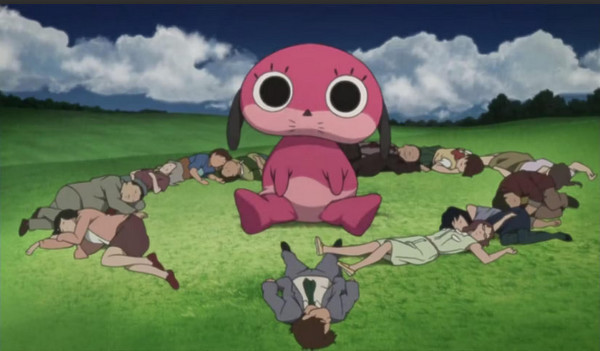
For maximum creepiness, save Paranoia Agent for late in your Halloween schedule. Most anime airs in late night time slots on Japanese television, but more than most anime, Paranoia Agent feels like it's designed to be watched in the dark amidst a sudden burst of insomnia and leave you not quite sure the next morning if it was a real show or just a weird nightmare. Even the opening and ending themes are designed for the early AM experience — “Dream Island Obsessional Park” is your scary wake-up call, “White Hill – Maromi's Theme” your lullaby back to sleep.
The only TV series directed by the late, great Satoshi Kon, Paranoia Agent was built from discarded ideas from Kon's previous three films: Tokyo Godfathers, Millennium Actress, and — the most relevant comparison as a work of horror — Perfect Blue. Episodic stories about different individuals struggling under stressful situations intersect in a mystery revolving around two characters permeating the collective subconscious — Lil Slugger, a kid attacking stressed-out people with a baseball bat, and Maromi, a kawaii dog mascot created by Lil Slugger's first victim. Your mileage may vary on which of these characters is scarier — I'm just saying, if I ran into that stuffed animal following me down a dark alley and telling me, “You're just thinking too hard, it's not your fault…"
Episodes of Paranoia Agent can swing from harrowing psychological drama to investigative detective procedural to wacky dark comedy. The connecting features amidst all the tonal shifts are that the show is always disturbing, willing to push buttons, and rich with social commentary. The central theme that everyone is choosing to live in dangerous fantasies because facing reality is too frightening has aged awfully well over the past 21 years. Those bookending scenes showing everyone in Tokyo hooked on their phones predate the launch of the iPhone by three years and the founding of Facebook by literally one day (actually, given timezone differences, they might have been happening at the same time)!
Anime is often an escapist medium, so Paranoia Agent stands out all the more for how it critiques escapism. Indeed, one of its best comedy episodes is the one brutally satirizing the anime industry itself. It's one of the best anime series I've ever seen, and give or take the similarly prophetic Serial Experiments Lain, it's the one that best utilizes the the art form's potential for frightening surrealism. I still miss Satoshi Kon.
—Reuben Baron
discuss this in the forum (28 posts) |
this article has been modified since it was originally posted; see change history